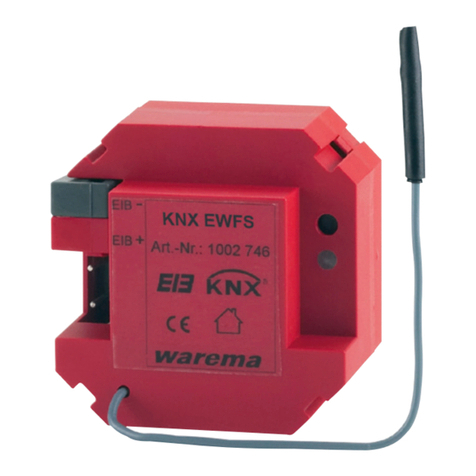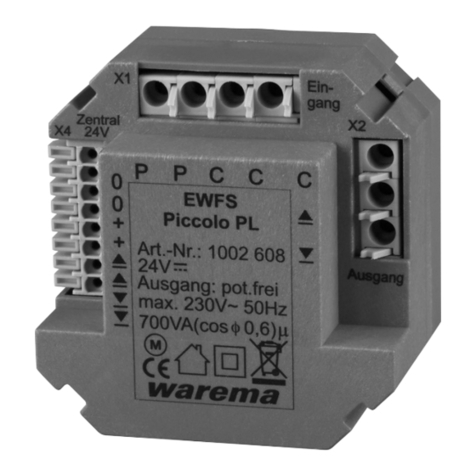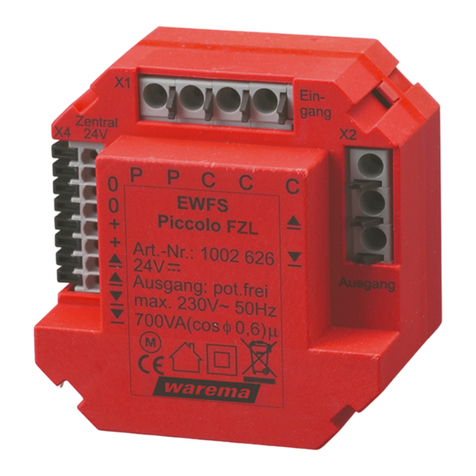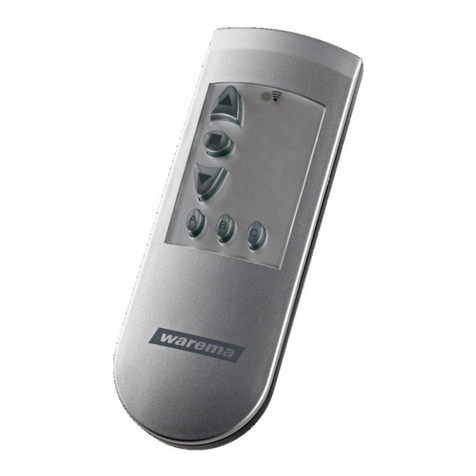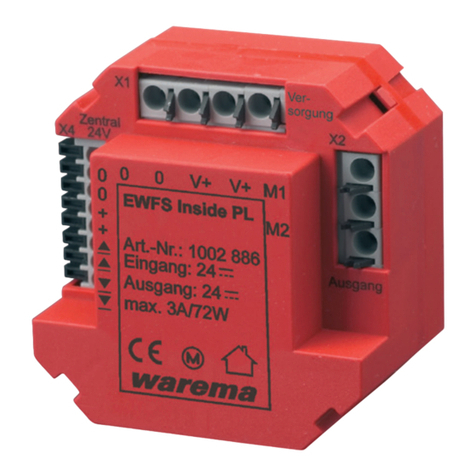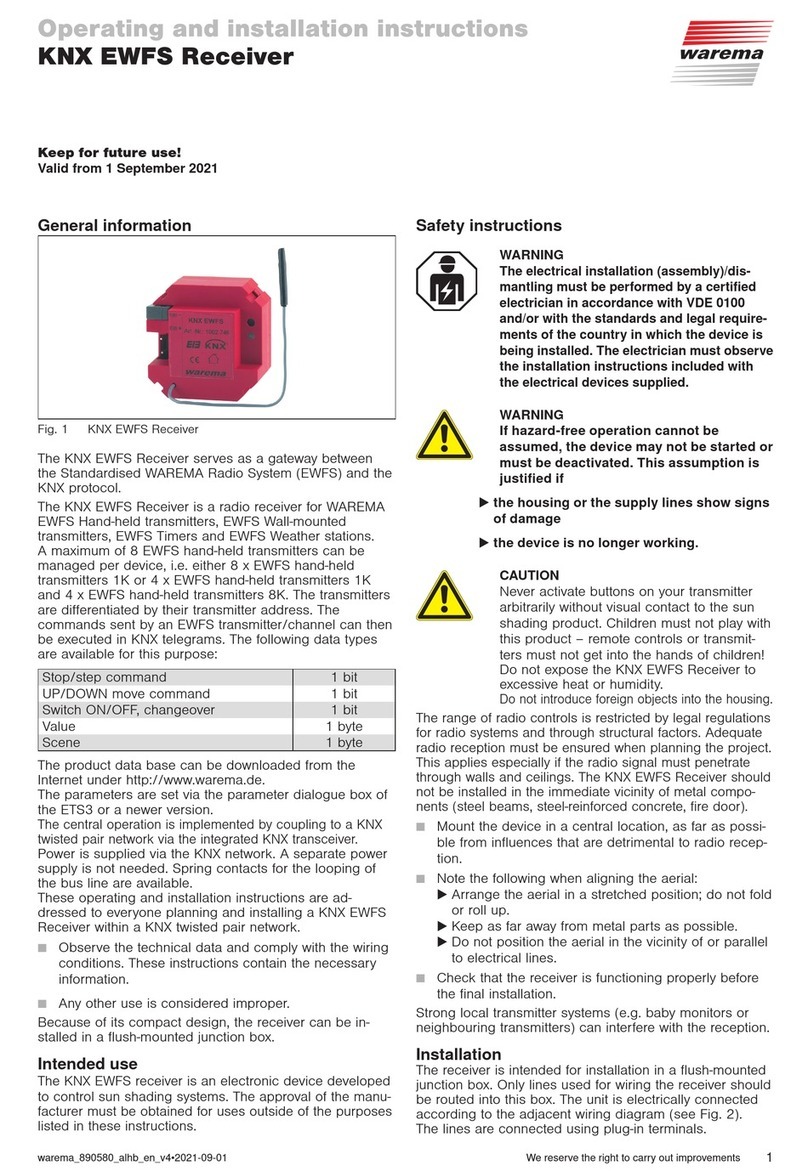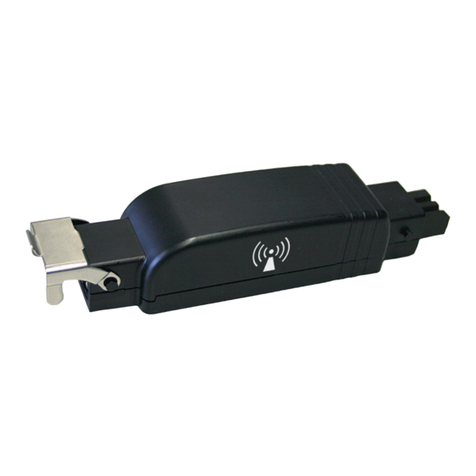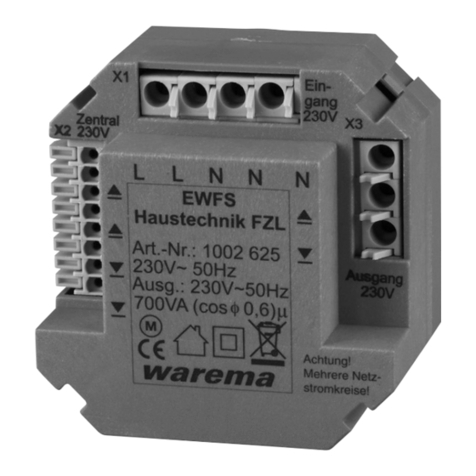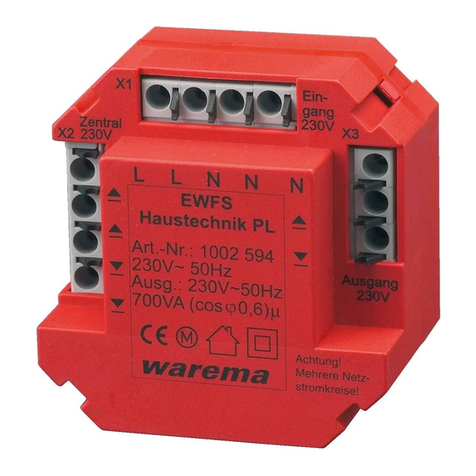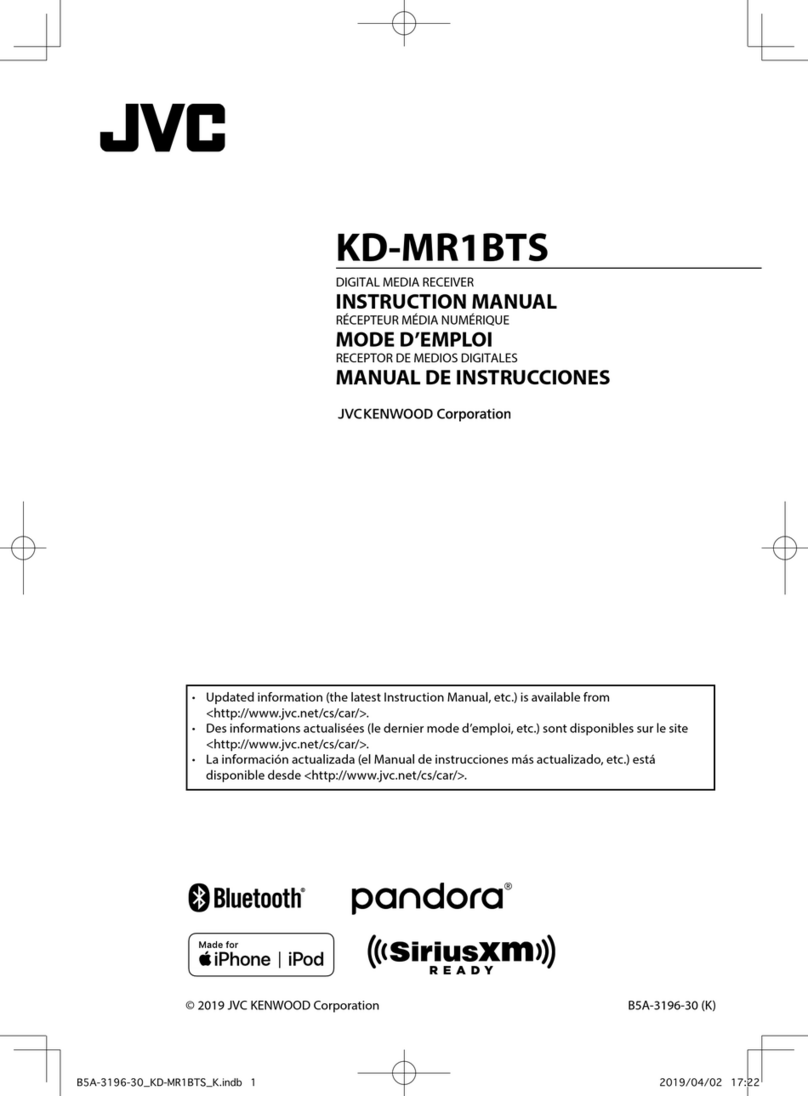
866088_i•en•2017-12-01We reserve the right to carry out improvements
2
Explanation of symbols:
Power-up: To learn, you must electrically isolate
a receiver or a group of receivers, either at the
in-line circuit breaker or at the associated plug-
in connector, and then reconnect it again after
approx. 5 seconds. (Power-up procedure). Al-
ways carry out a power-up procedure when you
see the symbol of the circuit breaker.
The receiver is now in learn mode for approx.
one minute. The learn button on the transmitter
must be pushed within this period or the learn
mode is closed. Push the learn button on your
transmitter whenever you see the learn button
symbol.
Wave: After the learn button on the transmitter
is activated, the connected sun shading system
carries out several movements. In these instruc-
tion, we use the adjacent symbol for waving.
Waving once: Press the learn button on the
transmitter, wait until the connected sun shading
system moves and then release the button im-
mediately.
Learning in the master channel
You can either learn in a 1-channel transmitter or one
channel of an 8-channel transmitter in a receiver as the
master channel. With an 8-channel transmitter, you only
need to make sure that you first select the desired chan-
nel, as the following example shows:
How to learn channel 1 of an 8-channel hand-
held transmitter into a receiver:
Place the receiver into
learn mode: Perform the
power-up procedure on the
receiver.
Learn in the transmitter:
Take the transmitter, select
channel 1, push and hold
the learn button, the sun
shading waves once, re-
lease the button.
Result: You can now operate the receiver with channel
1 of the transmitter.
Forming a group
You would like to operate two external venetian blinds with
an 8-channel hand-held transmitter (I) as follows:
Channel1 controls external venetian blind1 (master channel)
Channel2 controls external venetian blind2 (master channel)
Channel3 controls both external venetian blinds together
(auxiliary channel)
1
2
ΙΙ Ι
2
3
12
= Master channel = Auxiliary channel
Fig. 2 Building a group
1
Ι
1st step: Learn in the master channel
One master channel must be learned into each receiver
before you can form a group. As described in the section
"Learning in the master channel", learn in channel 1 on
receiver 1 as a master channel and channel 2 on receiver
2 as a master channel.
OTICEN If this is not possible because the power-up pro-
cedure cannot be performed separately for the
receivers, the master channels must be learned
in by means of "patent learning". Information
on this procedure can be found in the "EWFS
application brochure" at http://www.warema.
de
→
Produkte
→
Steuerungssysteme
→
Funksysteme.
2nd step: Learn in the auxiliary channel
You can now operate the external venetian blinds sepa-
rately, and each learned channel is a master channel in
the respective receiver. If the learn button is pushed with
this master channel, the learn mode can be started and
an auxiliary channel learned into the respective receiver
even without the power-up procedure. If the same auxiliary
channel, e.g. channel 3, is now learned into each receiver,
both external venetian blinds can later be operated as a
group with channel 3 but they can still be operated sepa-
rately via the master channels 1 and 2. The next step is to
learn the auxiliary channels:
Learning channel 3 into external venetian blind 1
Place receiver1 into
learn mode: Select chan-
nel1, press and hold the
learn button, external vene-
tian blind 1 waves once,
release the button.
Learn channel3 as an
auxiliary channel: Select
channel3. Press and hold
the learn button, external
venetian blind1 waves
once, release the button.
Channel3 is now an aux-
iliary channel for external
venetian blind1.
End the learn mode: Se-
lect channel1 and press
the "Up" or "Down" button.
Result: External venetian blind1 now can also be oper-
ated with channel3.
Learning channel 3 into external venetian blind 2
Place receiver2 into
learn mode: Select chan-
nel2, press and hold the
learn button, external vene-
tian blind 2 waves once,
release the button.
Learn channel3 as an
auxiliary channel: Select
channel3, press and hold
the learn button, external
venetian blind2 waves
once, release the button.
Channel3 is now an aux-
iliary channel for external
venetian blind2.
1
Ι
3
Ι
1
Ι
2
Ι
3
Ι
